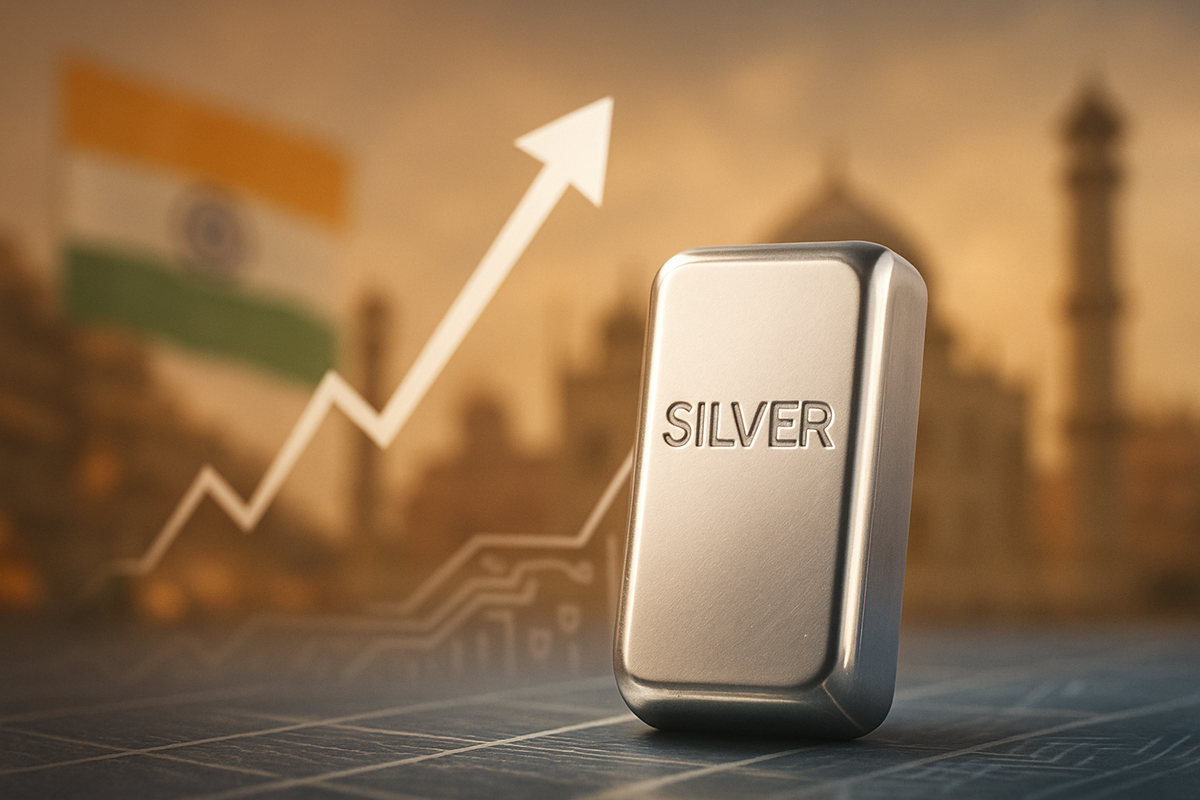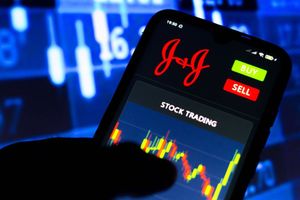
The Indian silver market is currently experiencing an unprecedented rally, with prices soaring to historic highs, breaching the significant ₹1,70,000 per kilogram mark. This meteoric ascent, fueled by a potent mix of robust festive demand, burgeoning industrial consumption, and tightening global supplies, has captivated investors and analysts alike, prompting fervent debate over the metal's future trajectory. As of October 19, 2025, the white metal continues its upward march, leaving many to wonder if a target of ₹2,00,000 per kilogram is within reach or if the market is heading for a cautionary repeat of the 2011 price correction.
This remarkable surge has immediate and profound implications across the financial landscape, impacting jewellers, industrial consumers, and individual investors. The rapid appreciation in value has created both immense opportunities and considerable risks, as market participants grapple with extreme volatility and the potential for a significant revaluation of silver's intrinsic worth as both a precious and an indispensable industrial commodity. The current scenario paints a complex picture of a market driven by fundamental strength, speculative interest, and a palpable sense of "fear of missing out" (FOMO) among buyers.
Unpacking the Unprecedented Surge: A Detailed Look at Silver's Ascent
The recent rally in Indian silver prices has been nothing short of extraordinary. On October 17, 2025, the December 2025 futures contract for silver on the Multi Commodity Exchange (MCX) (MCX: MCX) touched an all-time high of ₹1,70,415 per kilogram. In the physical market, prices have been even more aggressive, with major cities like Mumbai and Delhi quoting around ₹1,72,000 per kilogram, while some regions, including Chennai and Hyderabad, reported prices as high as ₹1,90,000 per kilogram on October 15, 2025. This rapid appreciation represents an astounding 53% increase year-to-date and a nearly 98% jump year-on-year, significantly outperforming gold.
The timeline leading up to this moment reveals a consistent upward trend throughout 2025. From approximately ₹1 lakh per kilogram in June 2025, silver almost doubled its value just before the Dhanteras festival, underscoring the intensity of the buying spree. This surge is underpinned by several critical factors: firstly, strong festive demand during the ongoing Indian festive season, particularly ahead of Diwali and Dhanteras, has traditionally bolstered precious metal purchases. Secondly, escalating industrial demand is playing a pivotal role, with silver being a crucial component in green energy technologies like solar panels and various electronic applications, solidifying its dual identity.
Further contributing to the rally are global supply constraints. The physical silver market has faced critical shortages since 2021, with demand consistently outstripping production. The inelastic nature of silver supply, with nearly three-quarters being a byproduct of other metal mining, makes it challenging to rapidly increase output. Domestically, a weakening Indian Rupee against the U.S. Dollar has also amplified returns for local investors, making silver more expensive in local currency terms. Lastly, silver's enduring appeal as a safe-haven asset amidst global economic uncertainties and geopolitical tensions, coupled with speculative buying driven by market buzz, has propelled its price skyward.
The initial market reactions have been varied and intense. While record high prices initially caused a slight slowdown in demand for traditional silver jewellery, there was a noticeable shift towards buying silver coins and even silver utensils, potentially for tax benefits. More significantly, Silver Exchange Traded Funds (ETFs) have witnessed a dramatic tripling of inflows compared to gold ETFs, indicating robust investor interest. However, this intense demand, coupled with scarcity, led some mutual funds to temporarily suspend lump-sum subscriptions in their silver ETF Fund of Funds due to significant premiums over international prices. The physical market has also seen severe scarcity, with India's largest precious metals refinery, MMTC-Pamp India Pvt, reportedly running out of stock, leading to unprecedented dealer shortages and "bidding wars."
Market Movers: Companies Poised to Win or Lose
The unprecedented surge in silver prices in India presents a mixed bag for various public companies, creating distinct winners and losers across the value chain. Companies involved in silver mining, refining, and industrial applications stand to benefit significantly, while those heavily reliant on silver as a raw material for consumer goods might face margin pressures.
Potential Winners: Companies engaged in silver mining and refining operations, or those with significant silver reserves, are likely to see a boost in their revenues and profitability. While direct pure-play silver miners publicly traded on Indian exchanges are few, global miners with exposure to silver could indirectly benefit. More directly, precious metal refineries and bullion dealers like those involved with the Multi Commodity Exchange (MCX: MCX) and major banks facilitating precious metal trading, stand to gain from increased trading volumes and higher value transactions. Companies that are distributors or retailers of silver coins and bars, such as certain jewellery chains that also deal in investment-grade silver, might experience higher sales value, although volume could be impacted by price sensitivity. Furthermore, manufacturers of green energy technologies, particularly solar panel producers, which use silver in their photovoltaic cells, might see increased demand for their products as the global push for renewables intensifies. However, they might also face higher input costs if they haven't hedged their silver exposure.
Potential Losers: On the other hand, companies for whom silver is a significant raw material input could face considerable challenges. Traditional silver jewellery manufacturers and retailers, especially those catering to the mass market, might experience a contraction in demand as consumers become price-sensitive. While some high-end jewellers might be able to pass on the increased costs, others could see reduced sales volumes and squeezed profit margins. Companies in the electronics manufacturing sector that heavily rely on silver for components like connectors, switches, and conductive inks might also face elevated production costs, which could impact their competitiveness if not effectively managed through pricing strategies or material substitution. Similarly, industries like photography (though diminished) and certain specialized chemical manufacturers that use silver compounds could see their operational expenses rise. The temporary suspension of lump-sum subscriptions in some silver ETF Fund of Funds also indicates challenges for asset managers navigating the high premiums and scarcity in the physical market.
The impact will largely depend on each company's ability to manage commodity price volatility, their hedging strategies, and their capacity to innovate or pass on costs to consumers. Companies with strong brand loyalty and diversified product portfolios might be better positioned to weather the storm, while smaller players with tight margins could struggle.
Wider Significance: A Market in Flux
The current silver rally in India is not an isolated event but rather a symptom of broader shifts in global financial markets and industrial landscapes. This surge fits into the wider trend of increasing demand for commodities, particularly those deemed critical for the energy transition. Silver, with its exceptional electrical and thermal conductivity, is indispensable for solar panels, electric vehicles, and 5G technology, positioning it firmly at the intersection of precious metals and strategic industrial resources. This dual identity makes its price movements particularly significant, indicating not just investor sentiment but also the pace of global technological advancement and green infrastructure development.
The ripple effects of this event are considerable. For competitors and partners in the precious metals market, especially gold, silver's outperformance could lead to a reallocation of investor capital. While gold remains the ultimate safe haven, silver's industrial utility and lower price point (relative to gold) make it an attractive alternative for growth-oriented investors. This could potentially divert some investment flows from gold ETFs to silver ETFs, impacting the relative performance of these two metals. Furthermore, the high premiums and physical scarcity observed in India could influence global silver trading dynamics, potentially leading to increased arbitrage opportunities or even more pronounced regional price disparities.
Regulatory and policy implications could also emerge. The Indian government might monitor the situation closely, especially concerning import duties and taxes on silver, to balance domestic supply with demand and curb potential illicit trade fueled by high prices and premiums. Policies promoting domestic refining or responsible sourcing could also gain traction. Globally, the growing recognition of silver as a critical mineral for green technologies might prompt strategic stockpiling or trade policies aimed at securing supply chains.
Historically, comparisons are inevitably drawn to the 2011 silver spike, where prices reached nearly $50/ounce globally before a sharp correction. In India, silver hit approximately ₹75,000 per kilogram during that period. The current rally, significantly surpassing those levels, raises the question of whether this is a sustainable ascent driven by fundamental demand or a speculative bubble akin to 2011. While the underlying industrial demand for silver is arguably stronger now due to the green energy transition, the rapid price appreciation and the "FOMO" sentiment share similarities with past speculative booms. The key difference lies in the tangible, increasing physical demand from industries that were not as prominent in 2011, suggesting a more robust fundamental underpinning this time, yet the risk of a sharp correction due to profit-taking or a shift in investor sentiment always looms.
What Comes Next: Navigating the Future of Silver
Looking ahead, the trajectory of silver in the Indian market will be shaped by a complex interplay of global economic trends, industrial demand, and investor sentiment. In the short term, the market is likely to remain volatile. Profit-taking after such a significant rally is inevitable, and any perceived "dips" could trigger renewed buying, as seen during the recent festive season. The ongoing physical scarcity in India and the high premiums over international prices suggest that domestic prices could continue to push higher, at least until supply catches up or demand moderates. Investors should brace for continued price swings and potentially sharp, albeit temporary, corrections.
For the long term, the outlook for silver appears robust, primarily driven by its indispensable role in the global energy transition. The increasing adoption of solar power, electric vehicles, and 5G infrastructure will ensure sustained and growing industrial demand. Market analysts project that silver prices in India could reach approximately ₹2.4 lakh per kilogram by 2026 and potentially ₹2.45 lakh per kilogram by 2027, further augmented by a weakening rupee. These projections underscore the belief that the current rally has strong fundamental drivers beyond mere speculation.
Potential strategic pivots or adaptations will be required across industries. Jewellers might need to innovate with lighter designs or alternative materials to maintain sales volumes. Industrial users of silver may explore hedging strategies more aggressively or invest in R&D for more efficient use of silver or potential substitutes, though finding a true substitute for silver's unique properties remains challenging. For investors, the current environment presents both market opportunities and challenges. The opportunity lies in potential further capital appreciation, especially if the ₹2,00,000 per kilogram mark is breached. The challenge involves managing the high volatility and discerning between genuine long-term growth and speculative excesses.
Potential scenarios and outcomes include a continued, albeit volatile, ascent towards the ₹2 lakh mark and beyond, supported by strong industrial demand and global economic tailwinds. Alternatively, a significant global economic slowdown or a sharp unwinding of speculative positions could trigger a substantial correction, similar to 2011, especially if the fundamental demand cannot sustain the elevated prices. A middle ground scenario involves prices consolidating at these higher levels, with periods of stability interspersed with smaller rallies and corrections, as the market digests the new price paradigm.
Comprehensive Wrap-up: Assessing Silver's Enduring Impact
The current record-breaking rally of silver in the Indian market to over ₹1,70,000 per kilogram is a landmark event, signifying a profound shift in the metal's valuation and market dynamics. The key takeaways are clear: silver is no longer just a precious metal; it is a critical industrial commodity essential for the burgeoning green energy and technology sectors. This dual identity, coupled with tightening global supplies and strong domestic demand, forms the bedrock of its current elevated prices.
Assessment of the market moving forward suggests a bullish bias, particularly for the long term. While short-term volatility and the risk of corrections due to profit-taking or speculative unwinding cannot be dismissed, the fundamental drivers appear stronger than in previous rallies, such as the one in 2011. The "trap" scenario of 2011, primarily driven by speculative fervor, seems less likely to repeat in its exact form, given the tangible and growing industrial consumption. However, the speed and magnitude of the current rally warrant caution against excessive exuberance.
The significance and lasting impact of this event will likely be a permanent re-rating of silver's value. It highlights the increasing interconnectedness of commodity markets with technological advancements and environmental policies. For investors, this period underscores the importance of understanding both the precious metal and industrial metal aspects of silver.
What investors should watch for in coming months includes global industrial production data, particularly in the solar and electronics sectors, as these will be key indicators of sustained demand. Monitoring global silver mining output and inventory levels will provide insights into supply-side dynamics. Domestically, tracking festive season demand post-Diwali and the Indian Rupee's performance against the U.S. Dollar will be crucial. Lastly, keeping an eye on investor sentiment, especially in silver ETFs and futures markets, will help gauge speculative interest and potential for short-term corrections. Navigating this dynamic market will require a nuanced understanding of both fundamental drivers and market psychology.
This content is intended for informational purposes only and is not financial advice






